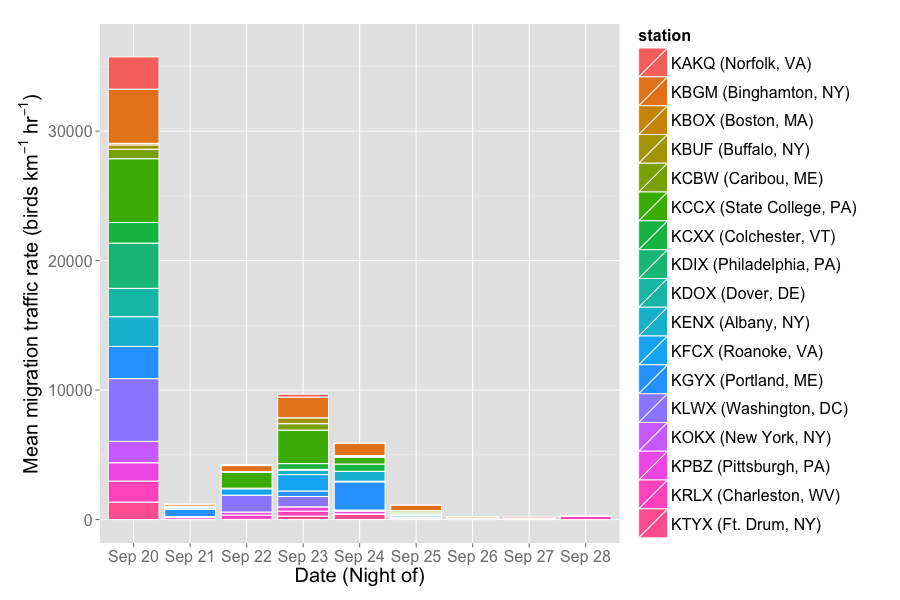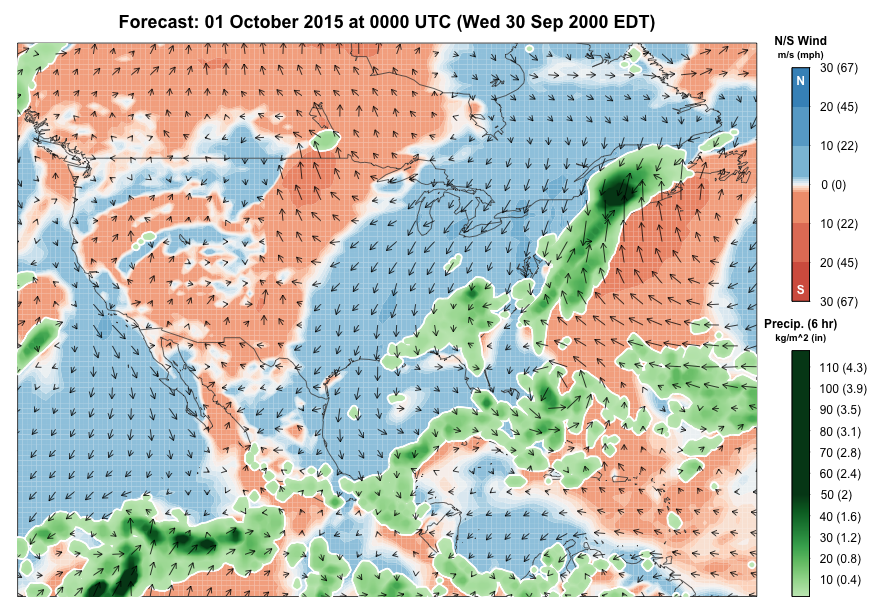Once again, Team BirdCast is excited to bring you reports of migration traffic rates in the northeast United States, calculated from a completely automated pipeline of algorithms. The images you see in Traffic Reports present the migration traffic rate (MTR), direction of bird movement, and speed of bird movement. See our first report or scientific paper (currently a preprint) for more information.
Migration over the last week
Coming off a monster regional movement the night of 20 September, migration has been modest over the last week. Since a respectable push last Wednesday night (23 September), birds have largely stayed put. The absolute number of individuals aloft in nocturnal movements in the Northeast peaks around late September/early October, so we expect great things when conditions improve: meaning heavy and very heavy migration is likely in the next 7-14 days across the region. Remember, migration traffic rate is defined as the number of birds from 0-3,000 meters above radar stations moving hourly over a 1 km line drawn on the ground.
Nightly migration loops
As one can see from the bar chart, above, there was little migration to speak of between 25-29 September; here’s the night’s loop from Saturday.
We have to look back to Wednesday and Thursday (to a lesser extent) to see interesting movements:
Outlook
We expect Wednesday night to be the next major push for much of the East. The exact placement of precipitation bands will be important to watch, as they may concentrate birds in certain areas or potentially locally shut down migration. Remember that such areas are where birds meet precipitation, primarily where blue (favorable conditions in the fall) and green (precipitation) meet in the imagery that follows.






